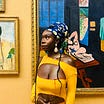In today’s insightful article, we delve into the origins and evolution of logomania, a trend that's more than just flashy branding. Tracing its roots back to ancient African textiles, characterized by vibrant geometric patterns, we explore how these designs predate modern luxury fashion's love affair with logos.
From Dapper Dan's pioneering work in Harlem to the iconic collaborations between Louis Vuitton and Supreme, and Gucci’s nods to African heritage, this piece highlights how logomania is deeply intertwined with African and Black cultures.
Join us as Trapetas uncovers the rich history and cultural significance behind one of fashion's most enduring phenomena!
Happy reading,
Amarissa
Editor-in-Chief, Fashion Talk

Wax prints, often associated with logomania, are ancient African textiles characterized by their geometric patterns. These design codes existed long before the establishment of luxury fashion houses.
Today, logomania holds significant importance in modern luxury fashion, influencing styling and textile choices.
Let’s delve into logomania’s rich Black lineage and its origins as an African design code.
Writer Mary Stringham of Mission Magazine defines logomania as “a trend whereby obvious branding is strewn all over one’s clothes.” The term "logo" originates from the Greek word for "words, principles, and speech," while "mania" suggests an obsessive enthusiasm. Thus, logomania refers to the fanatic use of branding or symbols in fashion.
Although Western writers often depict logomania as merely a trend, it is undeniably pervasive, especially in ready-to-wear collections over the past few decades.
Brands like MCM have championed the design code since their inception, with their famous monogram house code appearing on every bag, leather accessory, and silhouette.
MCM's market cap of nearly $500 million highlights the profitability of logomania and its significant influence as a house code.
Brands like Louis Vuitton, Balenciaga, and Gucci are well-versed in the logo phenomenon. For Gucci's centennial celebration, they showcased a collaboration with Kering Group labelmate Balenciaga, featuring both brands’ iconic house codes in their maximalist design.
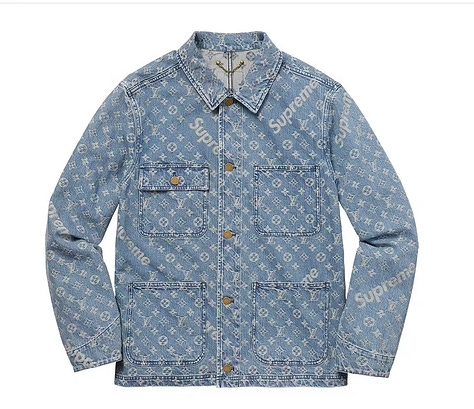
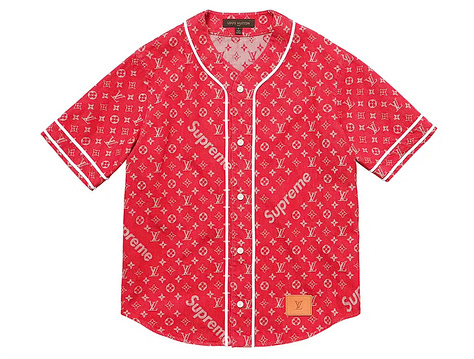
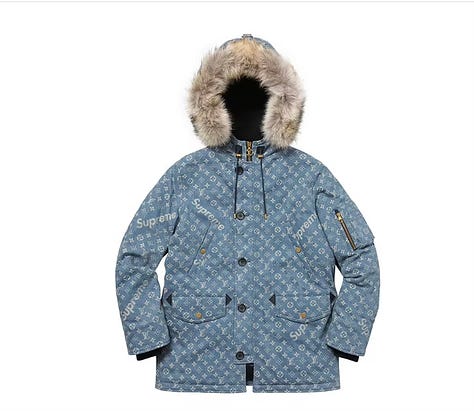
Louis Vuitton collaborated with the renowned New York-based streetwear brand Supreme for their 2017 Fall-Winter Collection. Supreme's logo was printed on everything from LV's iconic trunks and luggage to ready-to-wear pieces and even interior design elements in their pop-up shops.
GQ described the collection as “the most hyped-up fashion collection of all time.” The Logomania effect captivated audiences, as Supreme has built a legacy in skateboard, grunge, and streetwear fashion, with its logo consistently present and influential.
Harlem Designer Dapper Dan’s Influence
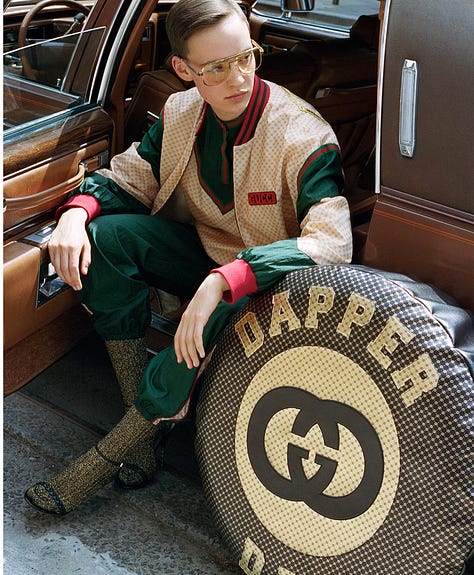
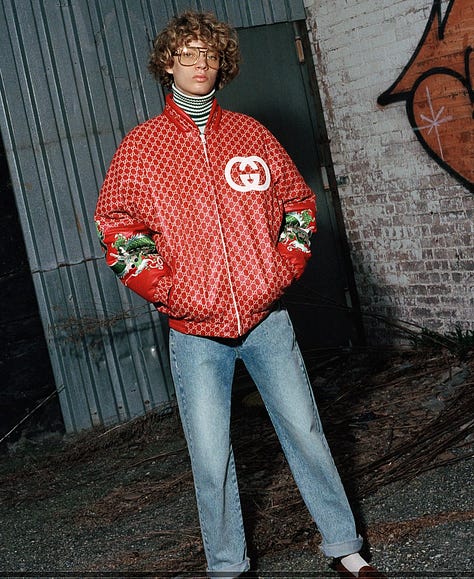
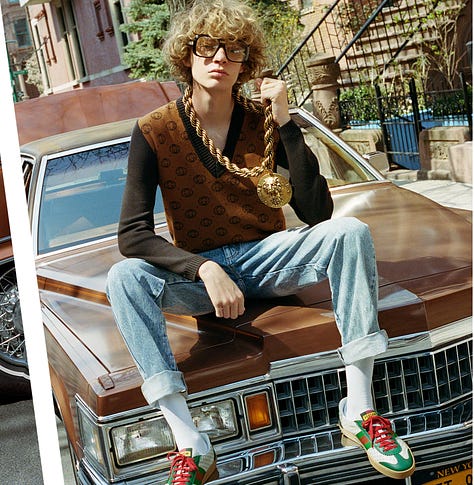
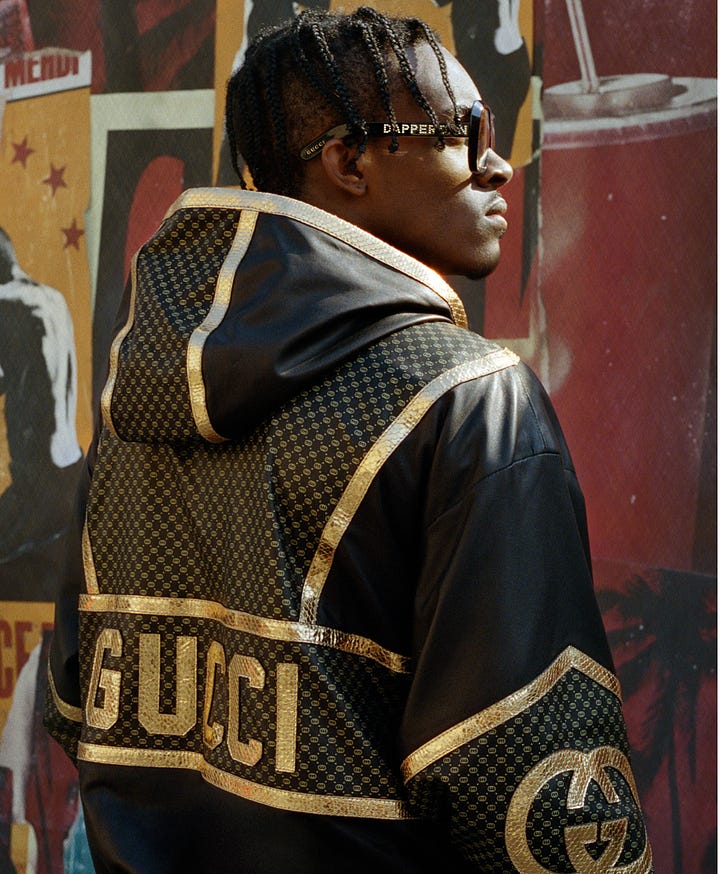
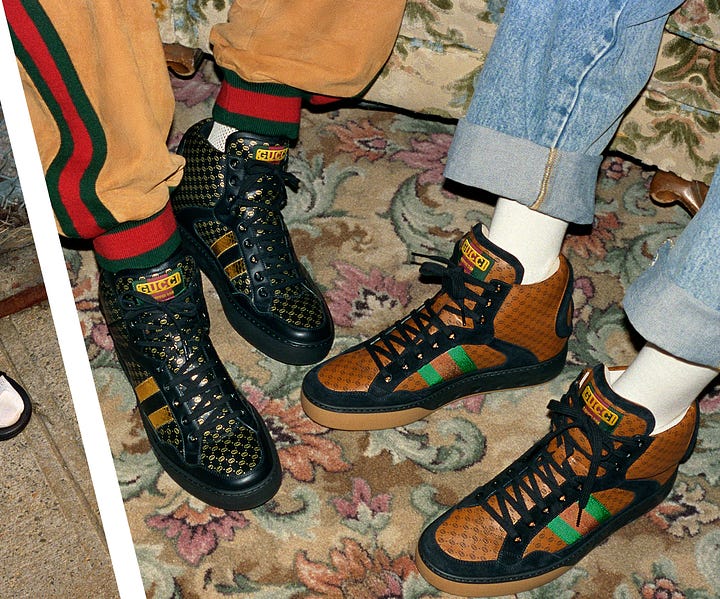
Visionary designer Dapper Dan, born Daniel Day, is credited with popularizing the now-famous logomania trend in America. He has reworked European house codes, such as Gucci's, into staples for his numerous collections.
Dan was awarded the CFDA Lifetime Achievement Award for his legacy and contributions. He has collaborated with black stars like Jay-Z at his iconic Harlem boutique.
Gucci’s CEO Marco Bizzarri said of designers, "Some dream of things that never were...the ones who create new paths and invent new ways of doing things. Dapper Dan is such a creator."
Dapper Dan referred to his rich geometric pieces from his heritage as a "macho type of ethnic ghetto clothing" before his Harlem boutique was raided with legal assistance from Sonia Sotomayor, who was then a Fendi copyright lawyer.
His designs were deeply influenced by the rich ethnic traditions of continental Africa. Today, while logomania is prevalent on many runways, it originally emerged from African culture and existed on the fringes of prestige before becoming a staple in luxury fashion.
Logomania’s West African Roots
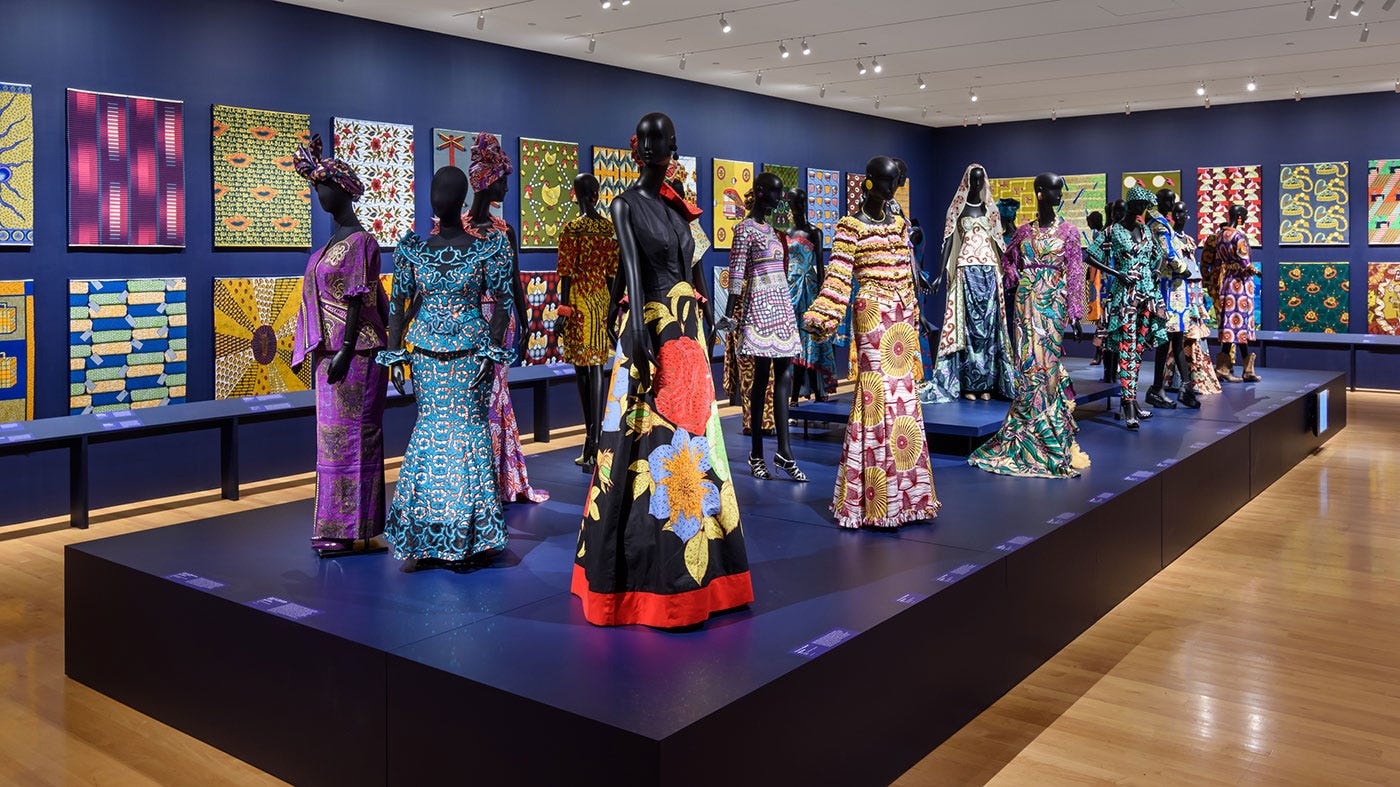
Wax print, the origin of monograms and logomania, dates back to 4th century Egypt. With over fifty-four countries, African clothing is incredibly diverse, though patterns and prints are distinctly West African.
Historically, West African clothing and textiles have been lightweight, a practical response to the region's warm climate, and are distinguished by vibrant colors and intricate patterns. Notable examples include Kente Cloth from the Ashanti and Ewe peoples of Ghana, Aso Oke and Adire cloth from the Yoruba in Nigeria, Akwete cloth from the Igbo in Nigeria, and geometric mud cloth from the Bambara/Bamana people of Mali.
Dr. Kwesi Yankah, a professor of Linguistics at the University of Ghana, explains that many textile prints in Ghana incorporate ancient African proverbs. In West African culture, clothing serves as a nonverbal communicator, used not only to assert social identities but also as a form of rhetoric and to celebrate historical events."
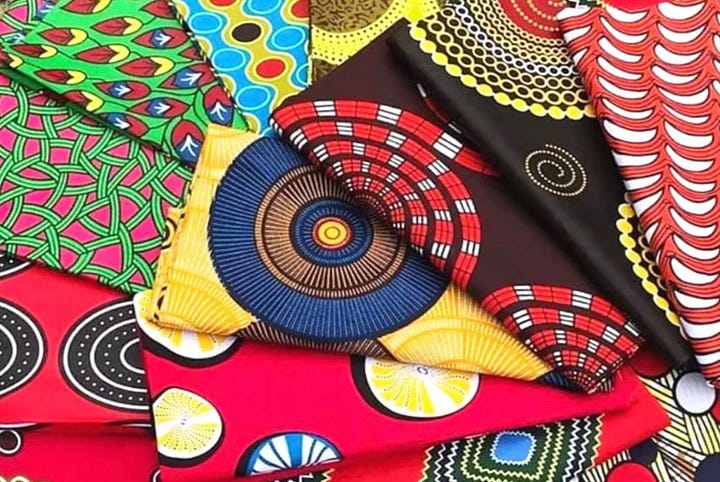
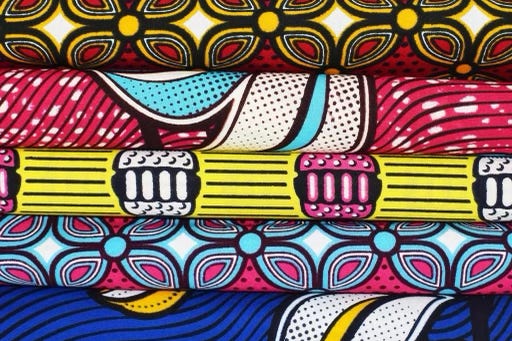
The origins of monogram prints in luxury fashion are widely debated among historians. Some trace its legacy back to 1896 when Georges Vuitton designed the interlocking L and V house code adorned with floral symbols, launching the signature monogram canvas used for bags, boxes, luggage, and modern-day ready-to-wear. Others credit Gucci in the 1960s for popularizing monogram prints with their iconic mirrored G house code on bags and accessories.
In 2017, Louis Vuitton's menswear drew inspiration from the cultural and ethnic heritage of the Basotho tribe in the South African region. Inscape Design College noted that the collection pays homage to the Basotho blanket, a distinctive cultural artifact exclusive to the South African region for over a century. These blankets are often adorned with geometric patterns that depict the social and cultural lives of historic people.
Luxury fashion has historically been late to adopt the geometric trend of monograms, despite continental Africans sporting this cultural look for centuries.
It is evident: logomania is distinctively rooted in African and Black cultures.
Logomania’s Rise to Fame
Dapper Dan's initial inspiration came while writing for the black publication Forty Acres and a Mule, where he was commissioned by the Urban League and Columbia University to visit Africa as a journalist. In 1968, Dan traveled extensively to Kenya, Uganda, Ethiopia, Egypt, and Tanzania.
Influenced by African textile and design codes, Dan later screen-printed the logos of luxury brands such as Fendi, Gucci, Louis Vuitton, and MCM onto premium leather, creating unique silhouettes for hip-hop styles such as tracksuits, bomber jackets, and baseball caps, catering to African American clientele overlooked by these European houses.
Logomania is closely associated with the golden age of Hip-Hop. Dapper Dan, considered the founder of logomania in America, declared himself the 'father of logomania' in a New York Times article. He emphasized his understanding of the significance of furs, diamonds, and fashion symbols within Black America.
The designer built his career by reworking house codes from legendary fashion houses such as Fendi, Gucci, and Louis Vuitton.
Dapper Dan has stated that what distinguishes these luxury brands in the Black community and Black culture is their house logos, which bear a resemblance to geometric African designs.
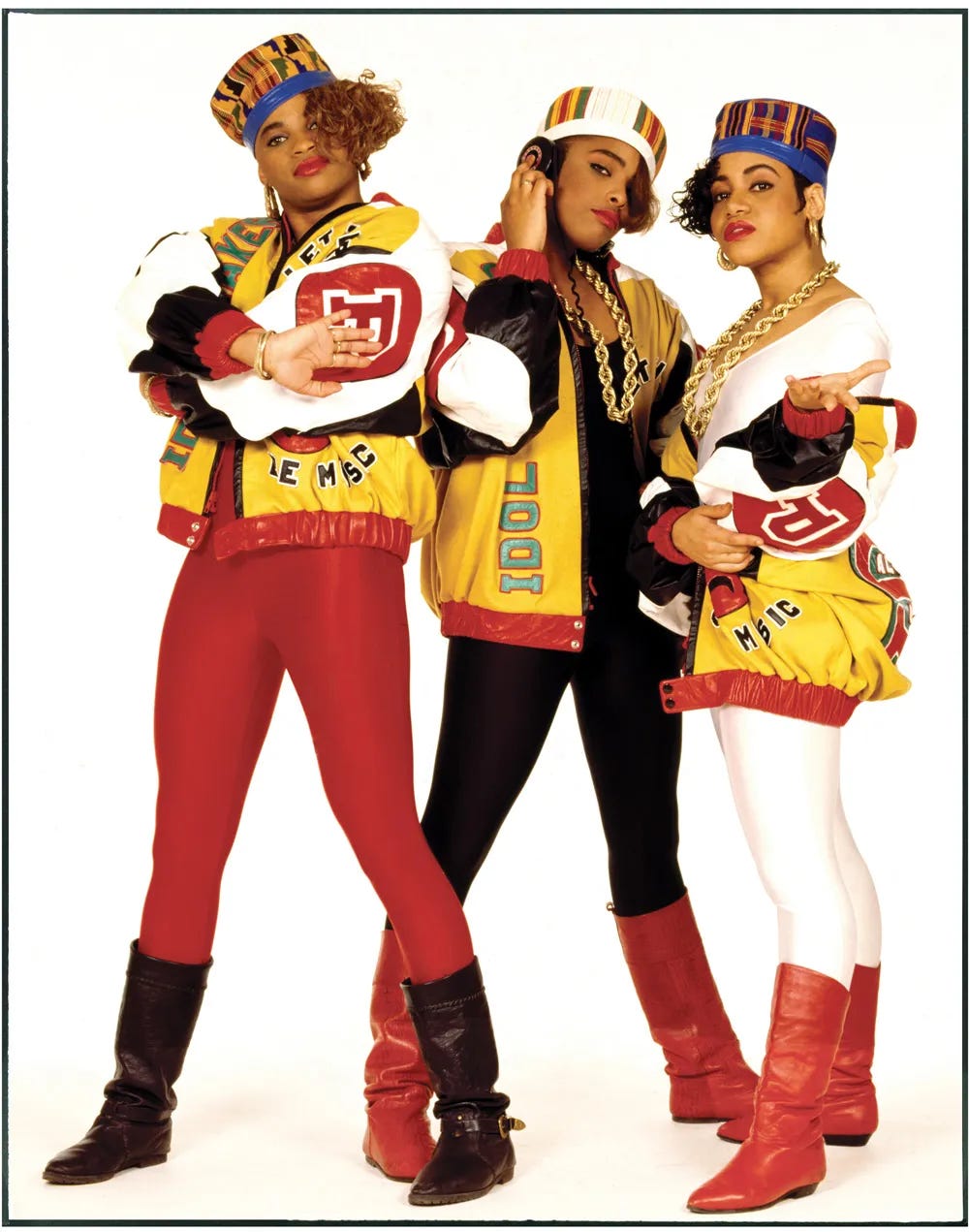
Dapper Dan began incorporating logomania by creating maximalist designs for big stars like LL Cool J, Rakim, and Salt-N-Peppa.
These stars wore Dapper's designs in music videos and on album covers. Even prominent sports stars sported his creations on and off tournament stages. Dapper Dan gained recognition for bringing his iconic logomania designs to the attention of European houses through his initially counterfeited designs.
Logomania has surged in popularity over the years and is now a widespread practice, undoubtedly popularized by African American design artists and the rich heritage of African geometric fashion. African influences are pervasive in our clothing, thanks to design movements like Logomania and beyond.
For updates, follow Fashion Talk on Instagram.







